Blood in (and as) Art
One of the first known expressions of human creativity, the Lascaux cave paintings, were created with blood, a material that has remained significant...
Kaena Daeppen 10 June 2024
22 August 2021 min Read
It’s DailyArt App’s birthday! Well, it is hard to believe but nine years ago, in 2012, everything started for us with launching the DailyArt mobile app. Since then, every single day in the app we present one piece of fine art with a short story about it. The app is currently available in 18 languages and this year will be available in two new ones (Hungarian and Czech). You can join our community of 1 million art lovers and download it for free from App Store and Google Play. Like every year, we have made a list of the most liked masterpieces of this year in the app, which we will present below. But before we start, some announcements!
We want to thank you for being with us all this time, for all your support and patience. As a small thank you gift, from August 19-23, the PRO version of DailyArt (without ads and with unlimited access to our Archive, Search, and Favs) will cost $1.99 instead of $5.99. So once again, if you’re interested, download the app and tap “Upgrade to PRO” button.
Furthermore, check the promos we have for you for DailyArt Courses, with art history courses, and on DailyArt Shop where you can check our paper goods.
Time to get back to the list. Enjoy!
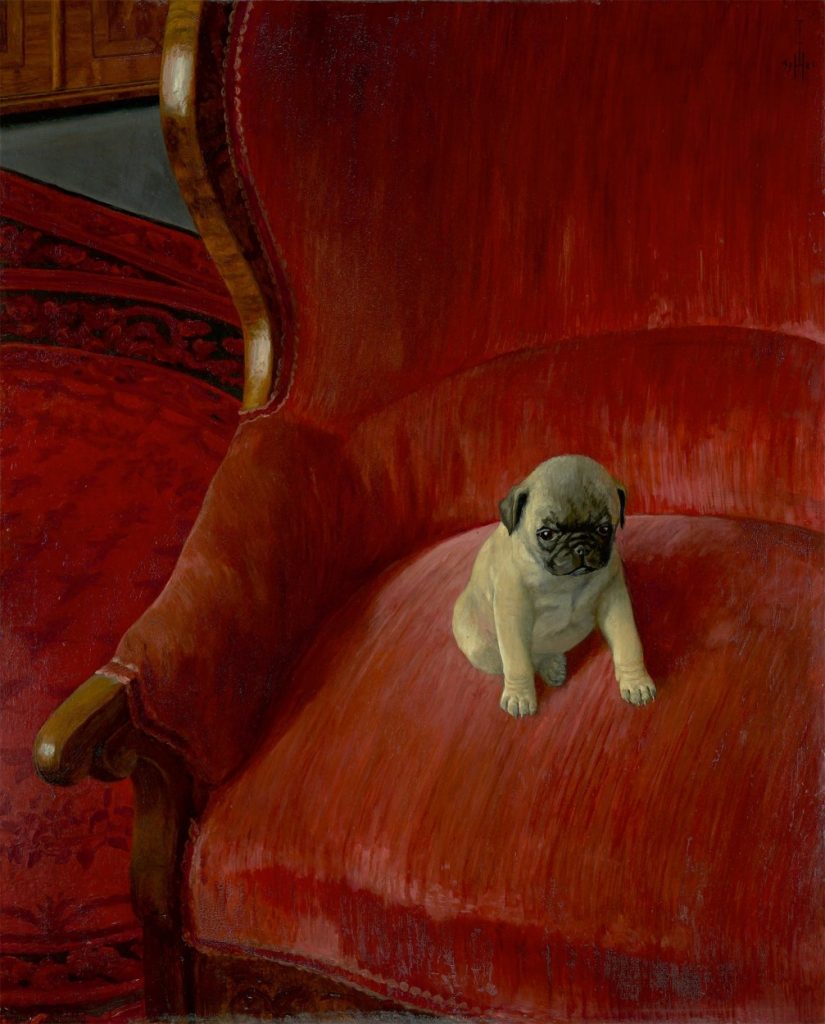
Not much is known about the painting which became our absolute highlight of 2021. Well, it shows a lonely pug sitting on a beautiful red armchair. Maybe he is waiting for his master or dreaming about going for a walk. He looks a bit melancholic to me, to be honest. His name is Siegfried, which sounds like the best possible name for him.
What is known, though, is that the painting was created by Thomas Theodor Heine, a German painter and illustrator. In 1896, he became successful as an illustrator for the satirical Munich magazine Simplicissimus, for which he appropriated the stylistic idiom of Jugendstil and the graphic qualities of Henri de Toulouse-Lautrec, Aubrey Beardsley, and Japanese woodcuts. It seems that Heine was a dog person; there is a famous poster of Simplicissimus made by him with a red French Bulldog, which is now in the collections of many museums (including MoMA). Spoiler alert: Siegfried will be a hero of our 2022 Weekly Calendar which will be on presale on DailyArt Shop soon!
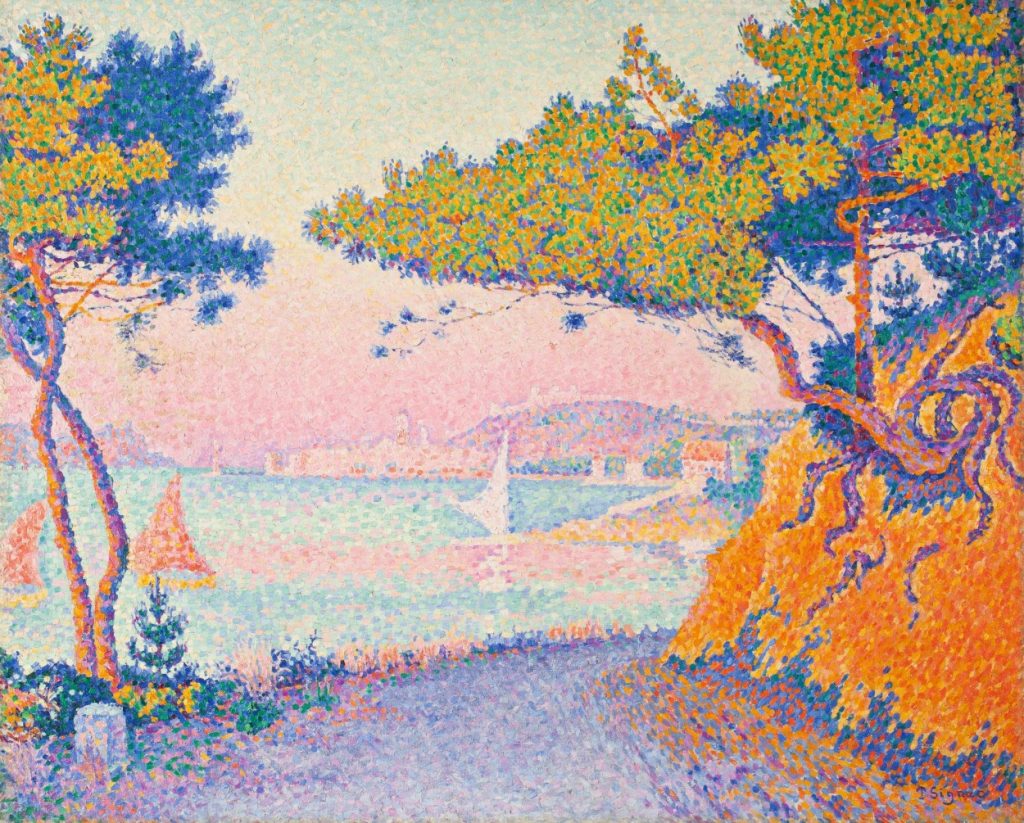
The second place belongs to the very summerish landscape. Together with Georges Seurat, Paul Signac challenged Impressionism’s spontaneity with a more systematic approach that is commonly referred to as Neo-Impressionism, one of the movements within Post-Impressionism. Guided by scientific advances in the fields of optics and color theory, Georges Seurat and Paul Signac, the creator of this painting, used a pointillist technique, carefully applying discrete dots of color that blend within the viewer’s eye rather than on the painter’s palette.
Signac’s paintings are so powerful because of their vibrant and energetic colors. They were inspired by his trips in the south of France. In Golfe-Juan, a Mediterranean resort town near Cannes, Signac bought a house and kept a sailboat (it is visible on the opposite shore in the painting).

Time to calm down a little. The Boulevard des Capucines was depicted by the Impressionists many times at different times of the year. The most famous paintings were done by Camille Pissarro and Claude Monet. This winter scene is one of the best examples of such. As in other paintings, we look down onto a busy city street crowded with carriages and pedestrians. Monet painted from the windows of the Nadar studio, where the groundbreaking first Impressionist exhibition took place in 1874. The critic Ernest Chesneau offered this response: “At a distance, one hails a masterpiece in this stream of life . . . But come closer, and it all vanishes. There remains only indecipherable chaos of palette scrapings. Obviously, this is not the last word in art, nor even of this art. It is necessary to go on and transform the sketch into a finished work. But what a bugle call for those who listen carefully, how it resounds far into the future!” BTW, you can learn about Monet and the first Impressionist exhibition by enrolling in our Impressionist Course!
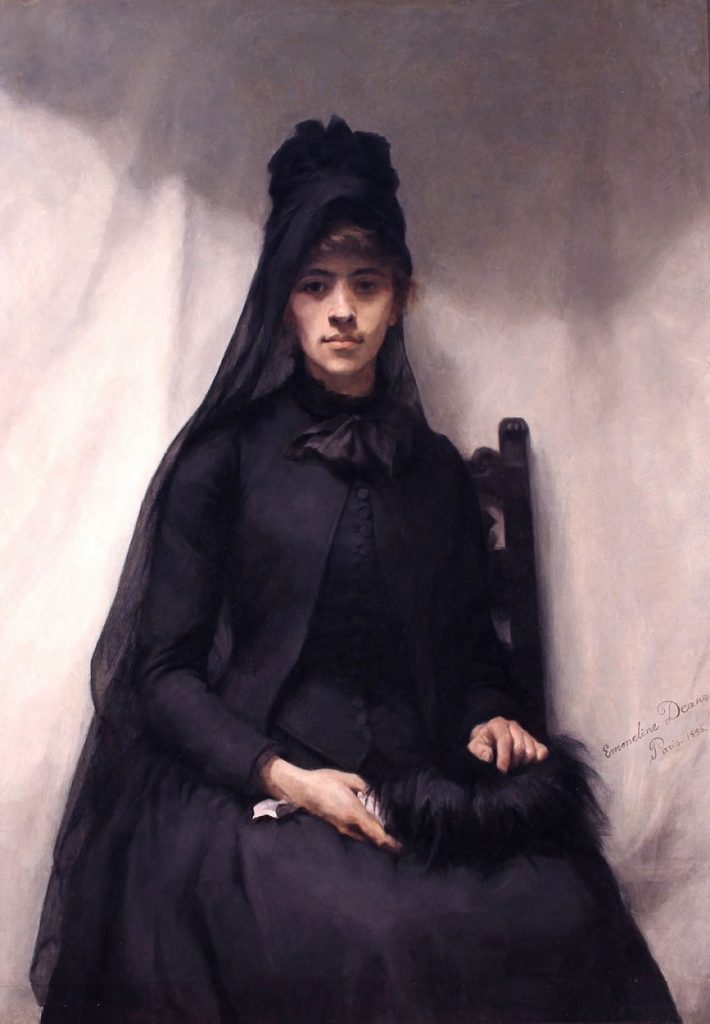
It is such a great surprise! Emmeline Deane is not a very well-known painter. What’s even more interesting, here she depicted another woman artist, Anna Bilinska-Bohdanowicz. Deane probably met the sitter in Paris in 1884, where both women were training at the celebrated Académie Julian. This was one of the few art schools in Europe that was open to female students in the 19th century. We don’t know anything about their relationship, but given the compassion evident in this painting, it’s fair to assume that artist and sitter were close. In this portrait, Bilinska is shown wearing typical mourning dress, with what may be a black feather fan resting on her lap. In 1884, Anna’s father had died, leaving her impoverished. A year later, her fiancé also died.
In deep despair, she traveled around France sketching and painting landscapes. After marrying in 1892, she had plans to set up an art school for women in Warsaw but died tragically young of heart disease, so her dream was never realized.
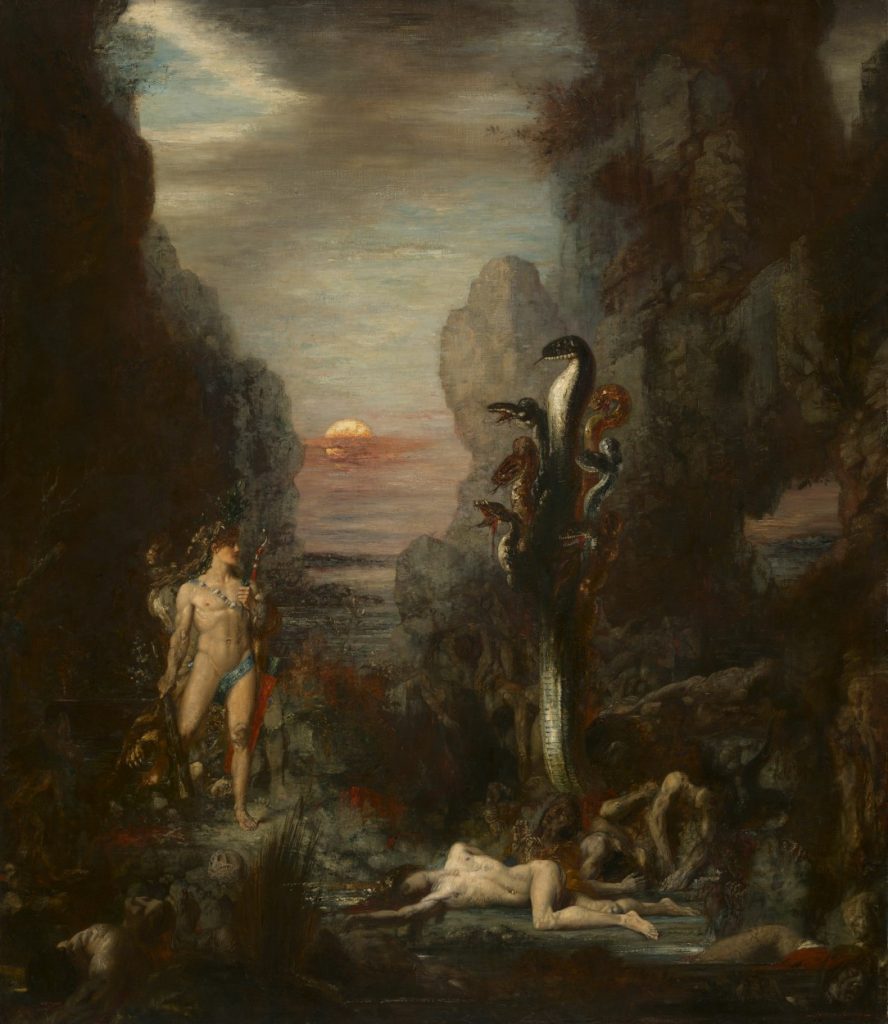
Gustave Moreau developed a highly personal vision that combined history, myth, mysticism and a fascination with the exotic and bizarre. Rooted in the Romantic tradition, Moreau focused on the expression of timeless enigmas of human existence rather than on recording or capturing the realities of the material world.
Long fascinated with the myth of Hercules, Moreau gave his fertile imagination free rein in Hercules and the Lernaean Hydra. Looming above an almost primordial ooze of brown paint is the seven-headed Hydra, a serpentine monster whose dead and dying victims lie strewn about a swampy ground. Calm and youthful, Hercules stands amid the carnage, weapon in hand, ready to sever the Hydra’s seventh, “immortal” head, which he will later bury.
Moreau seems to have intended this mythological painting to express contemporary political concerns. He was profoundly affected by France’s humiliating military defeat by Prussia in 1871. Whether or not Hercules literally personifies France and the Hydra represents Prussia, this monumental work portrays a moral battle between the forces of good and evil, and of light and darkness, with intensity and power.
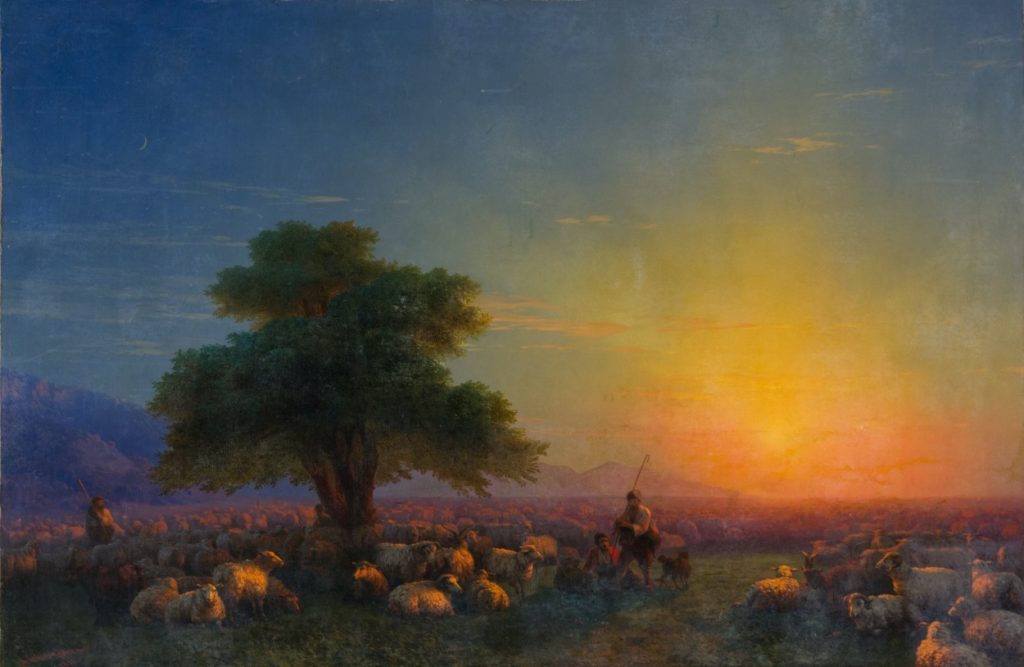
Ivan Aivazovsky is well-known as a seascape and battle painter, though he also paid attention to scenery and daily life in his art. One of his favorite subjects is flocks of sheep. Once an entire flock was driven to the sea by a windstorm and killed at his Sheikh-Mamai mansion. The artist saw it himself.
Sheep feels calm and peaceful. The artist shows a glen with an endless flock stretching to the horizon and a herdsman in the shadow of a spreading tree. Aivazovsky was one of the first artists who started featuring Steppe scenery.
The whole impression of the painting is defined by the sunset and the earth warmed by the sun during the day. A special technique of Aivazovsky is noticeable in the evening sun—the image of the dazzling limb (the sun’s rim) isn’t clean-cut. It’s hidden by a light haze and looks like a shining blot with blurred edges.
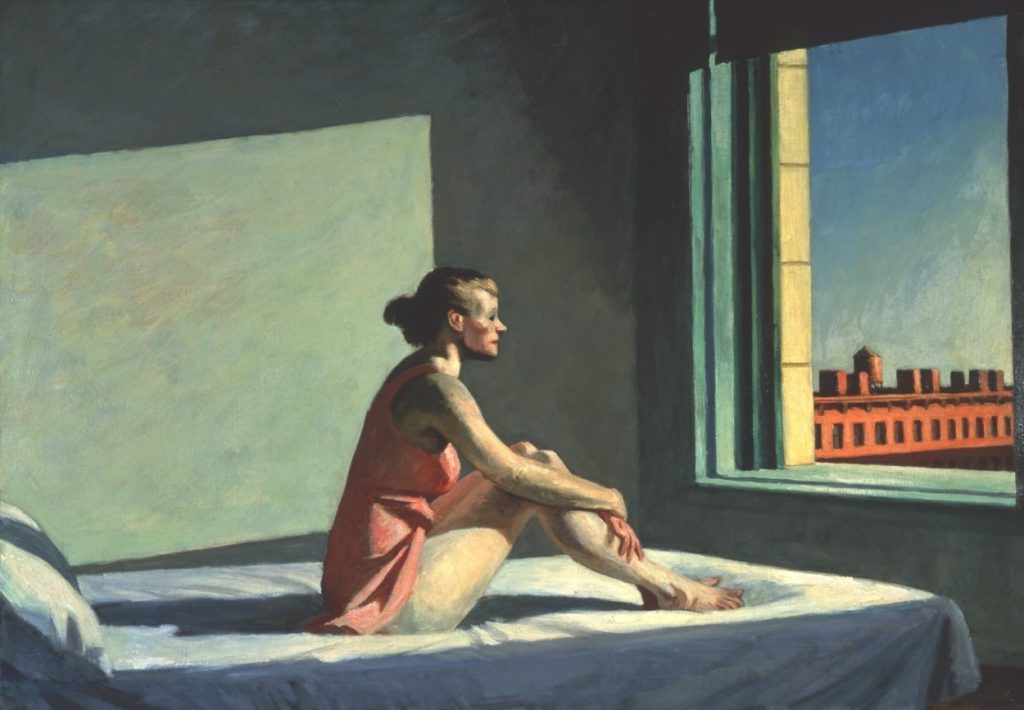
Well, I really believe that no one presented the solitude of the modern man like he did. At the same time, his paintings are so cinematic; maybe this is why we feel so close to them. In Morning Sun, the woman modeled after Hopper’s wife, Jo, faces the sun impassively and seemingly lost in thought. The bare wall and the elevation of the room above the street also suggest the bleakness and solitude of impersonal urban life.
Much of Edward Hopper’s early success can be attributed to Jo, who was also his manager. By the time the couple married in 1924, both were in their 40s. Jo, a painter and actress, was the more established of the two. In 1923, she was invited to participate in a group exhibition of American and European artists at the Brooklyn Museum, and encouraged the curators to include her husband’s work as well. The exhibition resulted in the first museum acquisition of his work.
Jo was Hopper’s only female model from 1923 until Hopper’s death in 1967, though he never considered his paintings to be portraits of her, using her as a stand-in for “any woman.” At the time of the painting of Morning Sun, Jo was 69 years old, yet she is rendered in a rather idealized, youthful depiction.
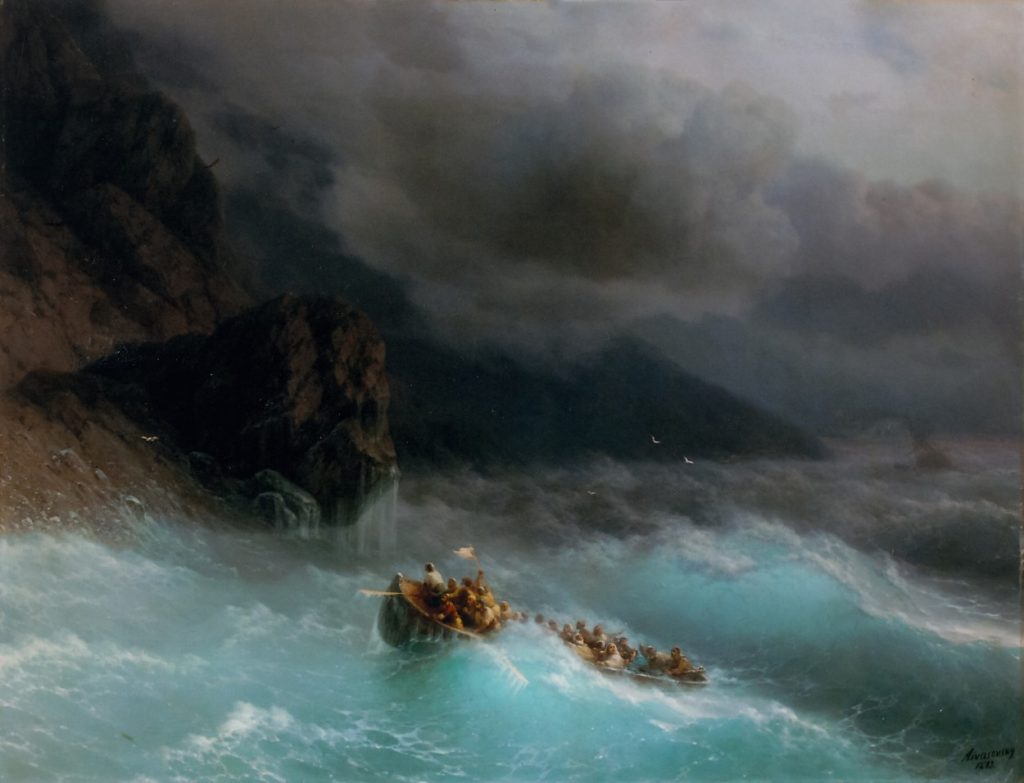
According to Aivazovsky himself, out of 6,000 works he created, 4,000 are dedicated to storms. I think we are quite honored to feature two of his works on our 2021 highlight list! The artist tried to show all the power of the raging waves and their bewitching beauty.
Dedicating his work to the water, the painter showed it in a variety of moods. The method of his work was determined by his phenomenal memory and good imagination. He rarely did life drawing; he usually worked from his studio.
Storm on the Black Sea contains new features but at the same time preserves the key features of Romanticism. In contrast to earlier canvases, the restrained color scheme is based on a subtly developed range of cool gray-green tones. Special virtuosity and artistry are manifested in the rhythm of the distribution of thin layers of paint, in the dynamics and shape of the stroke, in the beauty and complexity of textured solutions, and in the energy of light accents.
The painting combines much of what the artist has seen and experienced himself. He especially remembered the storm he experienced in the Bay of Biscay in 1844. The storm was so devastating that the ship was considered drowned, and the European and St. Petersburg newspapers reported the death of a young Russian painter, whose name was already well known. Years later, Aivazovsky recalled: “Fear did not suppress in me the ability to perceive and retain in my memory the impression made on me by the storm, like a marvelous living picture.”
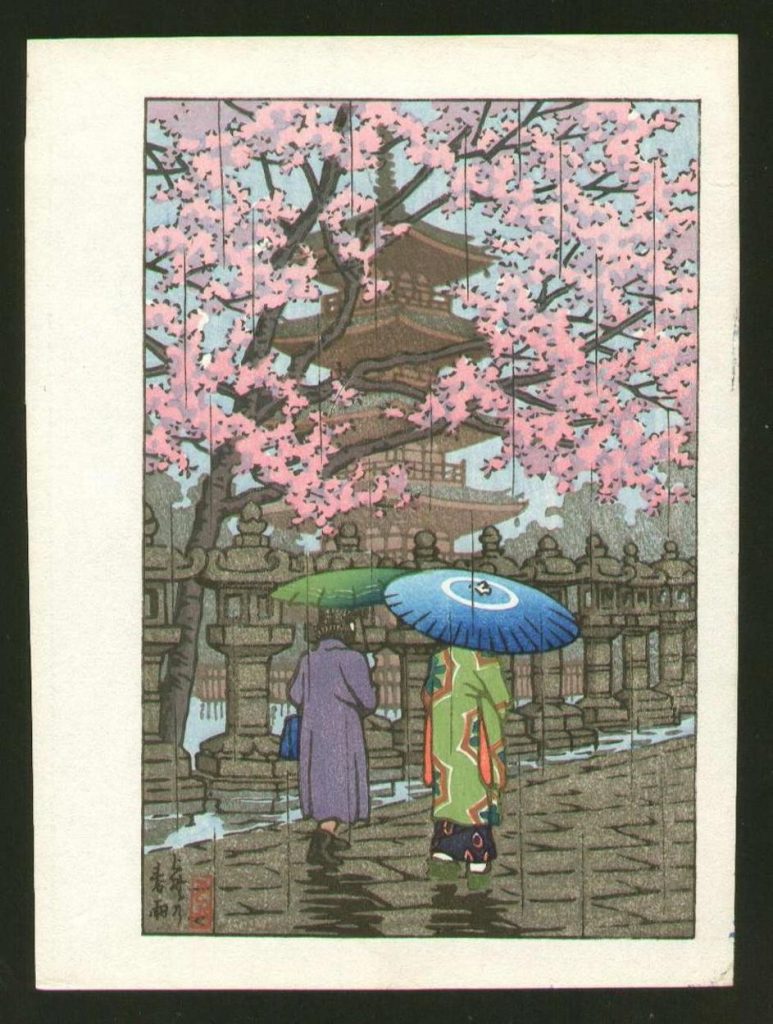
March is the month of blossoming cherry trees in Japan. It is one of the most beautiful things in the world. I’ve never seen it in person (I dream of it!) but if you don’t know what I mean, please check it out or immerse yourself in this beautiful woodcut by Hasui Kawase.
In Japan, cherry blossoms symbolize clouds due to their nature of blooming en masse. Besides being an enduring metaphor for the ephemeral nature of life, cherry blossoms are an aspect of Japanese cultural tradition that is often associated with Buddhist influence, and which is embodied in the concept of mono no aware (the awareness of impermanence or transience of things). The transience of the blossoms and their exquisite beauty and volatility has often been associated with mortality and graceful acceptance of destiny and karma.
Hasui Kawase is a mysterious artist, at least for the English-speaking world. He was one of the important printmakers of the Shin Hanga (New Print) movement. He is best known for his landscape artworks. Kawase had designed more than 100 prints for Watanabe Shōzaburō by the time the publisher’s shops, as well as the woodblocks for those prints, were destroyed in the fire following the Great Kanto Earthquake. As a result, his prints and other works by Watanabe’s artists, published just before the catastrophic quake, are considered rare and highly sought after.
Kawase travelled frequently almost every year during his career as an artist. He visited the countryside, towns, and cities in Japan, making sketches of the scenery. His prints often feature the moon, reddening leaves in autumn, and reflections on water surfaces, while people are hardly depicted in his print designs. These factors make the viewers of his prints feel quiet and peaceful.
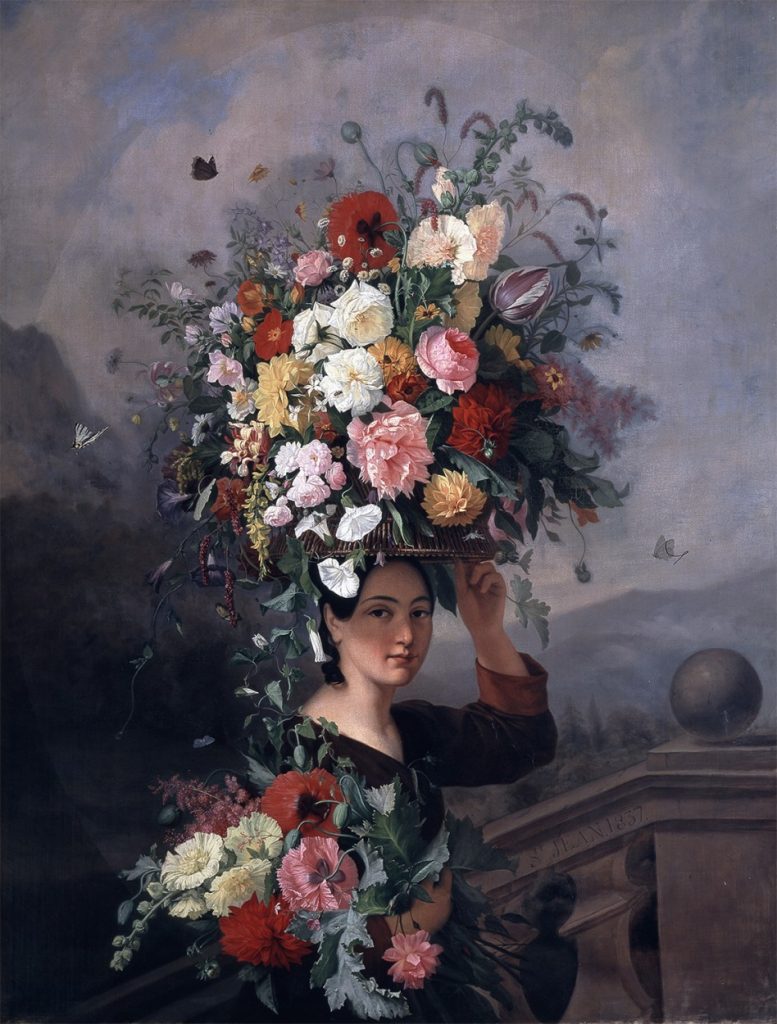
Simon Saint-Jean was a French painter who specialized in flowers. He won several contests for flower painting and was awarded a gold medal in 1826. In 1845, Charles Baudelaire saw his exhibit at the Salon and was highly critical, referring to his works as “dining room paintings.” The following year, Baudelaire criticized him again, for using too much yellow.
Well, I don’t see too much yellow or that this work looks destined for a dining room. With this painting, he tried to renew the still-life genre.
DailyArt Magazine needs your support. Every contribution, however big or small, is very valuable for our future. Thanks to it, we will be able to sustain and grow the Magazine. Thank you for your help!